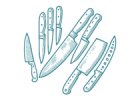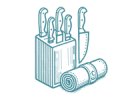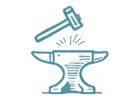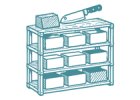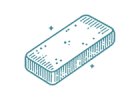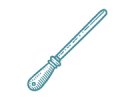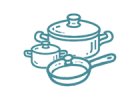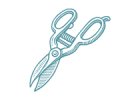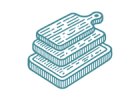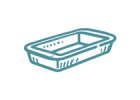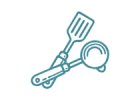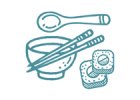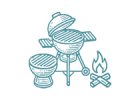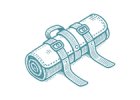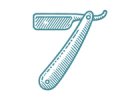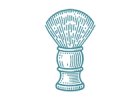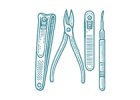How a broaching grinder works:
A broaching grinder is usually equipped with two or more slots with different coarseness of abrasive materials, between which the user stretches the blade of the knife. Each slot has a specific angle, which means that the grinding is already preset to the optimum angle without having to manually adjust the angle as with grinding stones.
Types of abrasive materials in a broaching grinder:
Ceramic discs: ceramic is commonly used for fine grinding and polishing. This is usually the last stage of the grinding process, which smooths and final sharpens the edge.
Carbide discs: carbide is harder than ceramic and is used for coarser grinding when more material needs to be removed, for example on very dull knives.
Diamond wheels: some broaching grinders can be equipped with diamond wheels, which are extremely hard and suitable for grinding hard steels.
Step grinding process in a stretch grinder:
Coarse grinding: If the knife is very dull, start with a coarser (carbide or diamond) slot. At this stage, the knife edge is restored and minor defects are removed.
Fine grinding: Once the coarse grinding is done, the finer grinding (ceramic) is continued. This step smooths the edge and ensures a sharp and clean knife edge.
Polishing (optional step): some broaching grinders also have special polishing wheels that perfectly smooth the blade and give it an extra fine sharpness.
Advantages of a broaching grinder:
Easy to use: no grinding experience required. Simply push the knife through the preset slots several times.
Speed: The broaching sharpener can restore knife sharpness very quickly, which is ideal for quick maintenance.
Compact size: thanks to its small size, it is easy to store in the kitchen and can always be at hand.
Safety: stretch grinders are designed with the user's safety in mind. Thanks to the tight fit and hand protection, the risk of injury is minimal.
Disadvantages of a broaching grinder:
Mostly fixed angle grinding: Most broach grinders have a fixed grinding angle (usually between 15° and 20°). If your knife has a different blade angle, the sharpener may change its profile, which may not always be desirable.
Less precise: Compared to hand grinding on a grindstone, where you have complete control over the angle and pressure, broaching grinders are less precise. This can lead to faster wear of the blade if it is used frequently and inappropriately.
Not suitable for very expensive or specialist knives: while broaching sharpeners are great for common kitchen knives, they may not be ideal for high quality or expensive knives that require more precise maintenance. Too frequent use can shorten the life of the knife in such cases.
How to use a broaching sharpener:
Select a suitable slot: For a dull knife, use a coarser (carbide) slot first, followed by a finer (ceramic) slot.
Pull the knife through: Hold the knife perpendicular to the grinder and gently pull it through the slot towards you, ensuring that the entire blade (from heel to tip) passes through the grinder. Repeat this step several times (usually 3-6 times), depending on the condition of the knife.
Fine grinding: If you are using a coarser grind, switch to a fine grit and repeat the same process.
Rinsing the knife: after sharpening, rinse the knife under warm water to remove any metal chips.
The Stretch Grinder is a great helper for quick and easy maintenance of common kitchen knives. Although not as precise as grinding on a grindstone, its advantages are speed, simplicity and convenience. For most home users, this is an excellent option for keeping knives sharp without the need for more complicated sharpening.






